As the harshness of our winter weather settles in, it may not be very cold but the winds are certainly causing damage, hopefully not to our surviving colonies.

The weather has a way of helping to sort the weak from the strong in many ways and the following shows an Old Oak tree which had to be felled due to the rotten centre which was wet and very much like “papier mache”. In days past this tree would have been hollowed out by various “beasties” and would then have been ideal for Honey Bees to make into a living active productive colony.
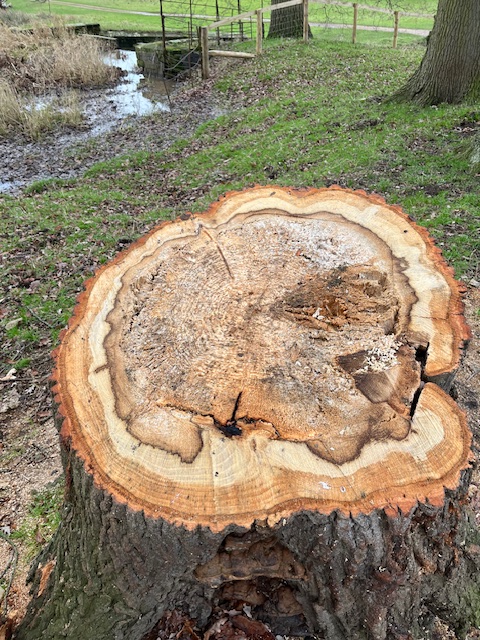
Some Apiaries do at times appear abandoned. The following is what happens to empty hives if left alone after all the colonies were destroyed after an EFB outbreak.
They were all scorched but now need a little TLC, after drying out, so they can be used in the season ahead.
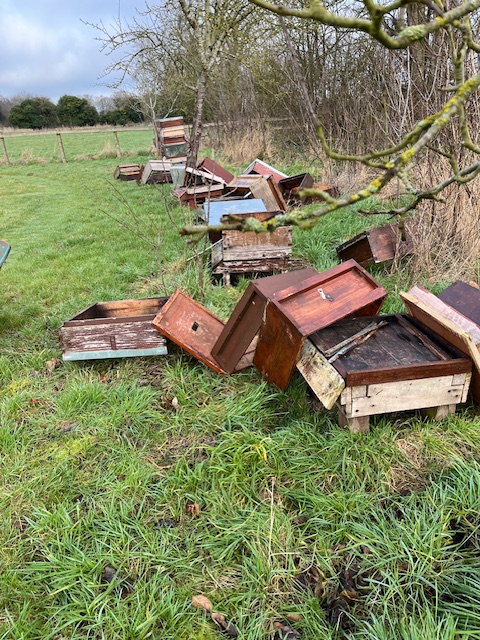
They had all been scorched to sterilise them, and combs and bees burnt
In the meantime the Association Apiary is looking good as we have successfully got all the colonies through the first part of the winter and the first spring flowers are starting to appear, which will be worked by any early insects out and about including our bees.
But keep a sharp eye out for warning signs of trouble.
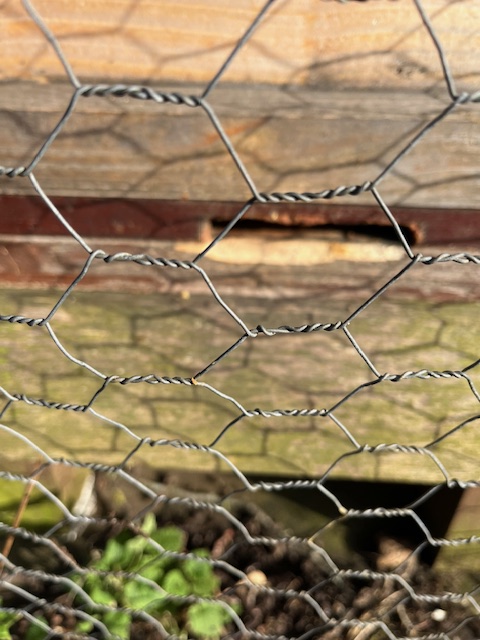
When I checked this colony they had plenty of food but no sign of any activity so I opened the hive and this is what I found.
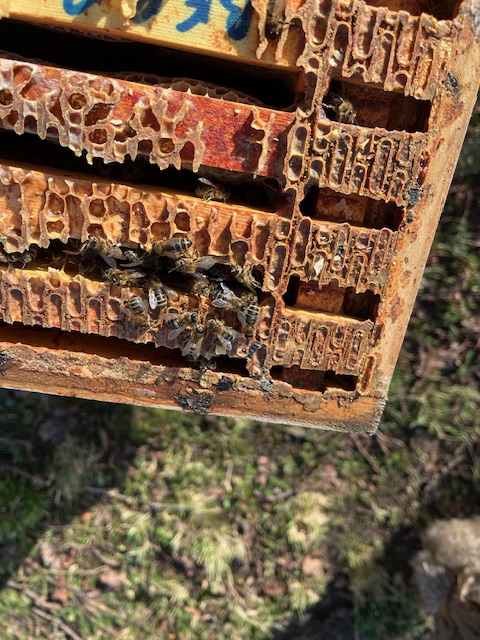
This hive is clearly doomed having gone Queenless for one reason or another. A great shame as last season they produced a large crop of honey and I used them to draw out a box of deep foundation ready for use in the 2025 season.
They swarmed late on, but the young Queen was laying well until something horrible went wrong and she has failed, resulting in a dying colony.
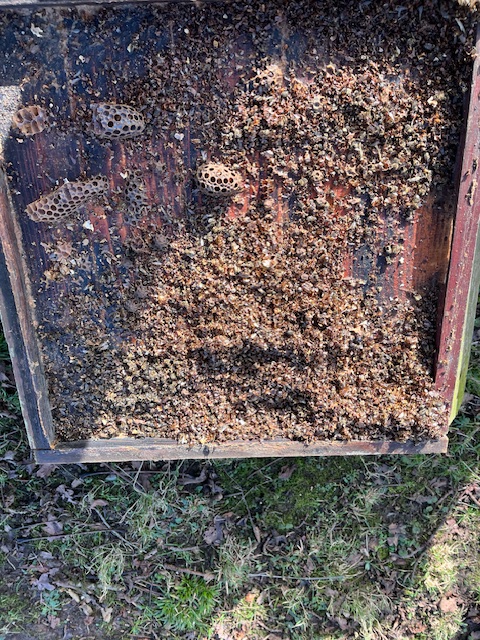
The mice had clearly detected this and chewed away until they gained access, eating their way through dead bees and comb.
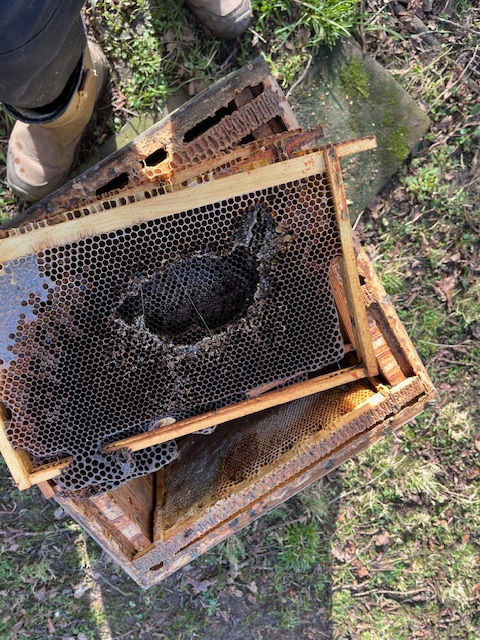
My role is to now clear the hive of dead bees and debris, scorch all the woodwork and sterilise any combs with Ascetic Acid if they are worth saving.
If not log burning stove here they come….
But on a brighter note, on those warm dry days in the month when the colonies can fly they will be out and about collecting water, taking a cleansing flight and cleaning debris from the colony, dead bees included.
I leave an old carpet square in the front of the hive to see what has been thrown out before it is scavenged by passing birds and rodents.

If hives are waterproof and upright, leave well alone. As long as they have plenty of food on board they will be fine.
Ensure Woodpecker wire is sound and check floor slides to see what debris and varroa drop is like as the Queens will soon start laying more eggs.
We can hope that next month colonies will be able to get out collecting fresh Pollen and Nectar an essential part of the gradual spring build up.
Next Month: Maintenance and Repair. Are you ready for the season ahead?

